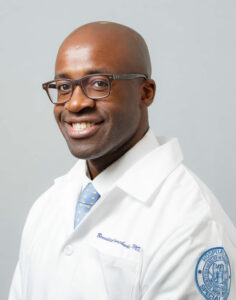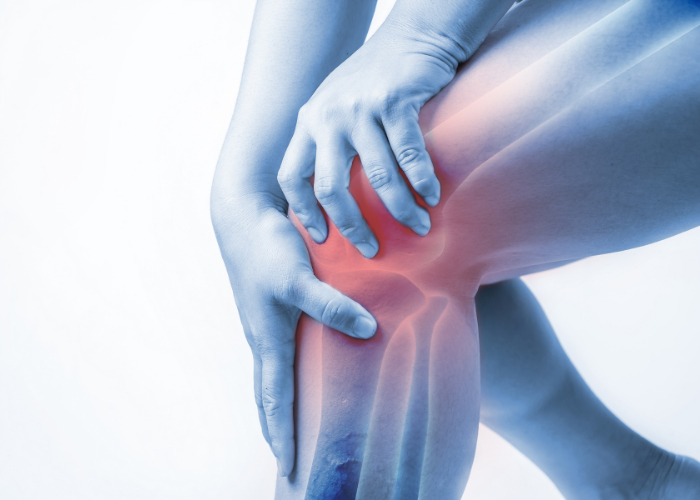Patellofemoral Arthroscopy Surgeon

Are you a runner? Runners often experience knee pain under the kneecap, known as patellofemoral pain, or “Runner’s Knee.” In many cases, patellofemoral pain can be treated non-surgically. However, advanced cases of runner’s knee may require a surgical procedure called a patellofemoral arthroscopy. Knee arthroscopy surgeon, Doctor Benedict Nwachukwu, provides diagnosis and both surgical and nonsurgical treatment options for patients in Manhattan, New York City, NY who have patellofemoral pain or runner’s knee. Contact Dr. Nwachukwu’s team today!
What is patellofemoral pain?
Complex joints, such as the knee, are commonly prone to problems. The knee joint performs many day-to-day functions that are essential to movement; however, the repetitive nature of movement means that the cartilage within the knee can sustain a significant amount of wear and tear. This condition worsens when muscular imbalance is a factor. Muscular imbalances can work in tandem with the erosion of cartilage to weaken the ability of the trochlear groove (at the distal end of the femur) to keep the patella (kneecap) stable. When there is pain under the kneecap, due to this form of wear and tear, the condition is referred to as patellofemoral pain or runner’s knee. Patellofemoral pain occurs most often in athletes but can affect patients at any level of activity.

What is the treatment for patellofemoral pain or runner’s knee?
Treatment for patellofemoral pain does not have a one-size-fits-all approach. Many patients can manage their pain with the help of physical therapy regimens prescribed by their orthopedic specialist, with corrective taping, or with the RICE method (rest, ice, compression, elevation). Surgical procedures for patellofemoral pain are reserved for more advanced cases, especially where there is recurrent patellar subluxation or dislocation. There are a variety of procedures available to address the cause of patellofemoral pain, such as patellofemoral arthroscopy, lateral retinaculum release and medical retinaculum imbrication, and medial patellofemoral ligament (MPFL) reconstruction. Doctor Benedict Nwachukwu, orthopedic knee surgeon, successfully treats patients in Manhattan, New York City and surrounding New York boroughs, NY who are experiencing patellofemoral pain.
What types of patellofemoral pain treatments can be done arthroscopically?
- Debridement: A miniature surgical camera is inserted into the knee joint via a small incision, (called an arthroscope) and a arthroscopic shaver is used to remove (debride) fibrillation (frayed areas of cartilage) that cause pain in the knee joint.
- Lateral release: A small incision is made in the lateral retinaculum to loosen the ligament and allow the patella enough slack to return to the trochlear groove.
- Medial imbrication: Often done in conjunction with a lateral release procedure, sutures are used to tighten the medial retinaculum ligament, which assists in pulling the patella into its original position within the trochlear groove.
- MPFL reconstruction: This procedure begins arthroscopically, where the knee joint will be examined, and frayed articular cartilage or other underlying issues may be corrected. This is followed by an incision one inch or shorter in length, through which a graft is harvested. The final step is placing the graft, for which the incision is three inches or shorter in length.
What is the recovery process after a patellofemoral arthroscopy?
The recovery process following patellofemoral arthroscopy varies, depending on the approach Dr. Nwachukwu takes. In most cases, it is reasonable to expect that most patients will be able to return to their usual physical activities within 6 to 8 weeks post-op. A full recovery may be made in 3 to 4 months, or with more complicated procedures, 8 to 12 months. During this time, patients should expect the following:
- Use of crutches to assist with movement, as well as limiting weight-bearing activities in the first several weeks.
- Avoid lifting heavier loads, and in some cases avoid twisting movements.
- Following and completing a physical rehabilitation program designed by Dr. Nwachukwu is vital to a full recovery after patellofemoral arthroscopy. Programs vary in length, but most will include exercises to improve range of motion in the knee joint and stretch or strengthen the quadriceps as necessary.
For more information on patellofemoral pain syndrome and the arthroscopic treatment for runner’s knee, please contact the office of Benedict Nwachukwu, MD, orthopedic knee doctor serving Manhattan, New York City, and surrounding New York boroughs, NY.





